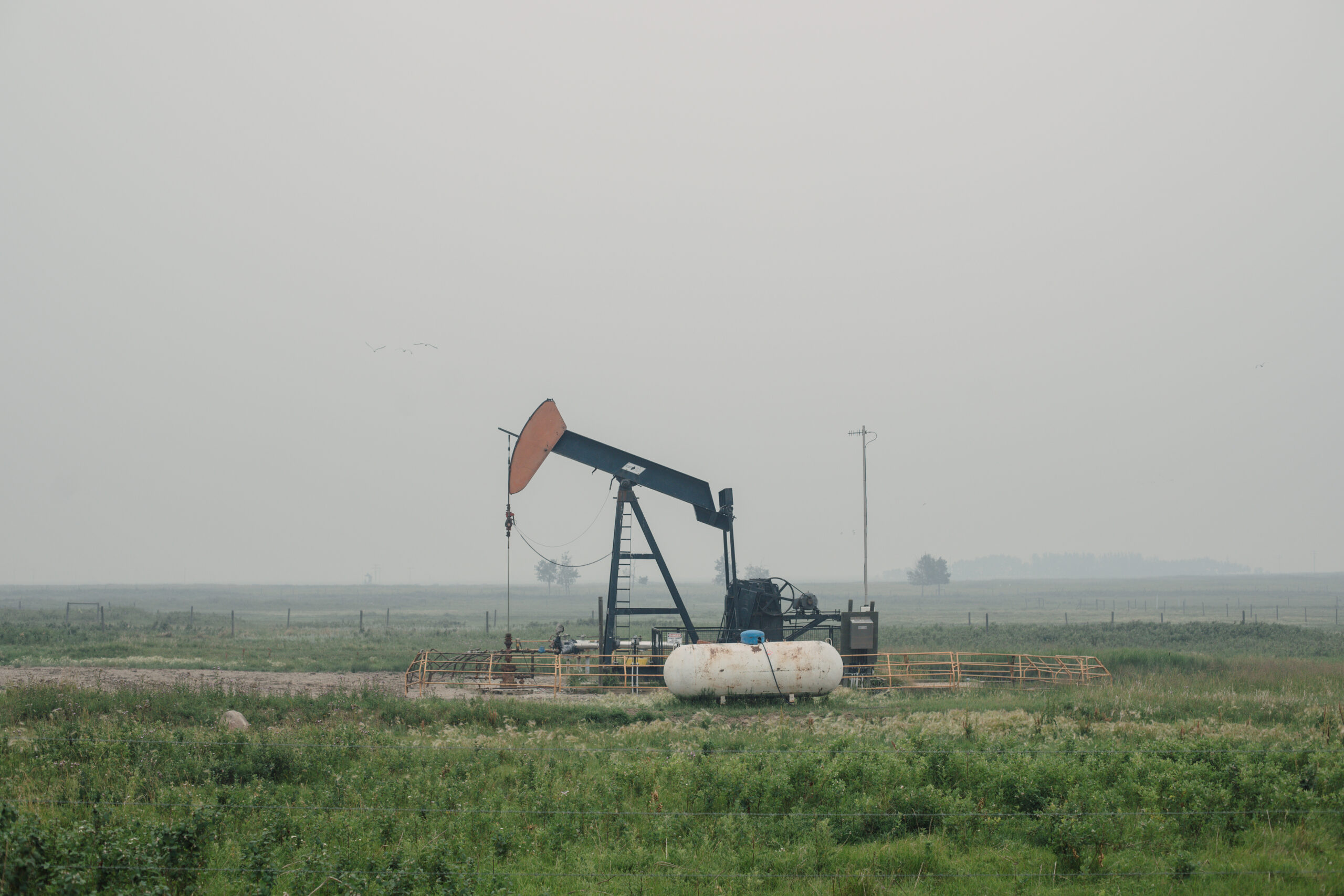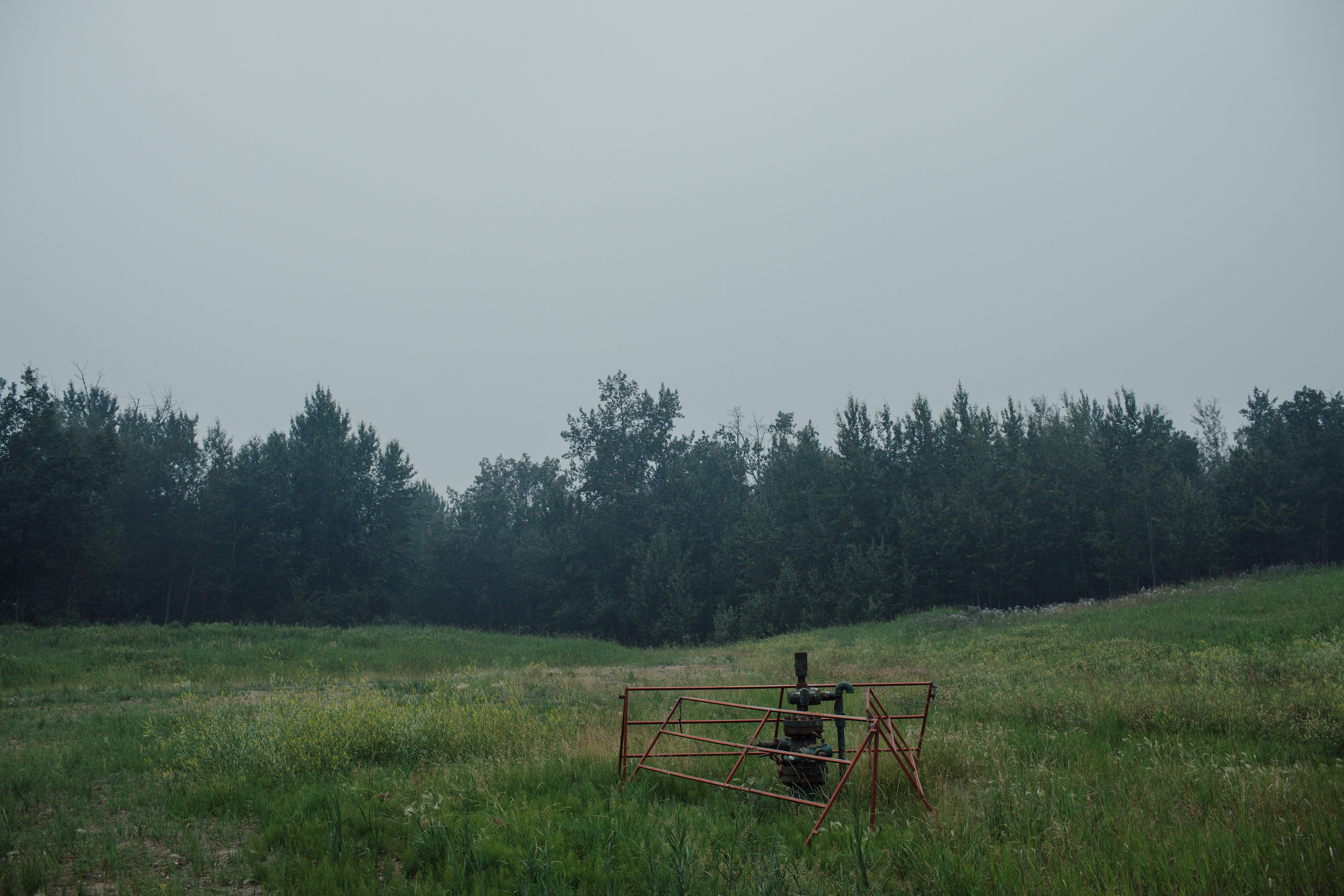
In a Nova Scotia research lab, the last hope for an ancient fish species
Racing against time, dwindling habitat and warming waters, scientists are trying to give this little-known...
Get the inside scoop on The Narwhal’s environment and climate reporting by signing up for our free newsletter.
The number of inactive oil and gas wells in Alberta decreased for the second year in a row and industry spent more on cleaning up its sites in 2023, but the problem of clean up remains significant.
Those are the key takeaways from the Alberta Energy Regulator’s second-annual report into liability management in the province.
Given the complexity of the issue, however, it’s worth drilling down into the nitty-gritty details.
Here’s a breakdown of what we know, and don’t know, when it comes to the ongoing cleanup of Alberta’s oil and gas sites.
This is only the second year the Alberta Energy Regulator (AER) has reported on well cleanups since it introduced its new liability framework, so while the preliminary data is moving in a positive direction, it’s a little premature to declare a trend.
But there is some good news here.
For one, the number of inactive wells — those which are not producing but which haven’t yet been properly capped and sealed — has gone down for the third year in a row.
In 2023, the number of inactive wells dropped from 83,000 to 79,000. That’s half the decrease in 2022, but it still shows some progress on a problem that had been growing steadily for years.

Industry also spent more of its own money on cleanup in 2023, surpassing the $700-million minimum spend set by the regulator and doling out $769 million.
That marks a $73-million increase over the previous year.
The regulator also notes industry spent more on older wells in 2023 — those that have been inactive for 10 or more years. Approximately 40 per cent of the wells decommissioned in 2023 fit into that category.
Industry also started to focus on wells that have actually produced oil or gas, which wasn’t always the case.
But there are some devilish details (stay tuned!), including the fact that 36,000 of the remaining inactive wells in the province are 10 or more years old — 46 per cent of the total.
One of the biggest issues when examining the cost to clean up oil and gas sites across the province is the fact that no one knows what the actual costs are.
Thanks to the reports provided by the Alberta Energy Regulator, the data is getting clearer.
The total estimated liabilities in 2023 were down slightly to $33.1 billion, but the regulator notes that has risen to $36 billion as of June 2024. The reason for that increase is better data.
In short, the regulator compiles an average based on what companies are actually spending to clean up sites. As more cleanups are completed, more data points are generated to refine the estimate.
The true costs of closing a well will depend on a specific site and region.
Previous estimates have been frequently criticized as being too low, mostly because companies have tended to do work on sites that are easier and cheaper to clean up — leaving more polluted and more costly sites untended (and uncounted).
Critics have argued the true costs could be almost double the regulator’s estimates.
Staff at the regulator didn’t say whether they had data on whether closure work is being done on wells with higher risks to human health and the environment.
“We’re really focusing and encouraging licencees to sort of do area-based closure work, because we’re wanting the most efficient closure work,” Anita Lewis, a senior advisor on liability strategy at the Alberta Energy Regulator, said in an interview, referring to working on sites in one geographic area to reduce costs.
That said, spending on remediation was up, meaning the industry was tackling more problematic sites compared to the previous year. Before a site can be officially certified as reclaimed, meaning it is restored to a sort of equivalency to what it was pre-industrial activity, it must be remediated. Higher remediation spending suggests industry is cleaning up more sites with contaminated soil.
And while industry is spending more on decommissioning older wells, it still focused 60 per cent of its energy on shutting down wells that were less than 10 years old.
There’s also a significant chunk of wells — 22 per cent — which are “marginally active.” In other words, they’re still producing, but 10 barrels or fewer per day.
All of that spending on site cleanup doesn’t necessarily equal closure.
Actual decommissioning of wells in 2023 is down sharply from the year prior. Industry closed 6,623 wells last year, compared to 10,334 in 2022. Those wells will then go on to be remediated and/or reclaimed. It can take a long time to get to the reclamation stage, when a site is considered equivalent to its pre-development state.
The estimates are only for conventional oil and gas wells, and do not apply to the oilsands. Estimates for cleaning the oilsands range from $46 billion to as high as $130 billion.
Were it so easy.
Spending by industry is up, but overall spending is down this year. That’s due to the end of a subsidized government cleanup fund called the site rehabilitation program that wound down in 2023 and a drop in spending by the industry-funded Orphan Well Association tasked with cleaning sites with no solvent owner.

In 2022, spending totalled over $1.2 billion. In 2023, the total was just over $1 billion.
There was less money spent on environmental site assessments this year, the step prior to cleaning up any contamination on a site, which could indicate less remediation work in 2024. Lewis said it’s normal to see fluctuations in where companies spend their money and there was more work on decommissioning in the first year of the new system, which inevitably leads to more site assessment. Those site assessments are often done shortly after decommissioning, she said.
The Orphan Well Association spent less and decommissioned fewer wells and its inventory continues to rise — a trend that has only gotten worse over the past decade. It estimates it will cost $862 million to clean up its current inventory.
Like industry as a whole, the number of wells it decommissioned in 2023 was down sharply from 1,412 to 867.
Last year the Alberta Energy Regulator started naming and shaming companies that don’t meet either their cleanup spending quotas.
In 2023 there were 54 companies which didn’t meet their spending quotas, for a combined debt of $5 million. The regulator says 91 per cent of companies were in compliance. In 2022, 51 companies were non-compliant — 36 of whom remained on the shame list for 2023.
But the issue of not keeping up with obligations isn’t just about who’s spending money now.
There’s been substantial criticism of the regulator for allowing companies to transfer licences for problem wells to junior companies who lack the resources to clean them up.
The regulator now screens transfers and says it’s doing better at weeding out companies that won’t be able to cover their costs. It requires a security deposit for those deemed “less capable” but that security only covers 23 per cent of the estimated costs for those companies.
The vast majority of liabilities that have been transferred from one company to another are owned by new licencees — companies that are under three years old. Those companies are responsible for $900 million in liabilities, with $25 million collected in securities.
Get the inside scoop on The Narwhal’s environment and climate reporting by signing up for our free newsletter. On March 17, federal Conservative Leader Pierre Poilievre...
Continue reading
Racing against time, dwindling habitat and warming waters, scientists are trying to give this little-known...

From investigative reporting to stunning photography, we’ve been recognized with four 2024 CAJ Awards nods...

The Narwhal is expanding its reach on video platforms like YouTube and TikTok. First up?...
